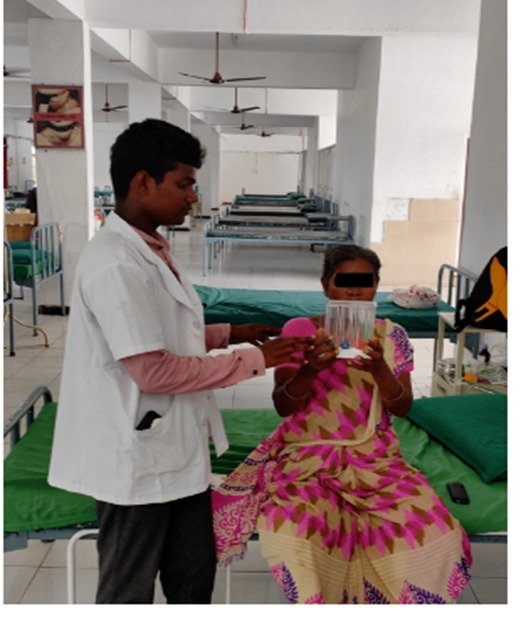A Study to Assess the Effectiveness of Thoracic Expansion Exercise and Diaphragmatic Breathing Exercise in Post-Operative Hernia Patients to Improve Pulmonary Functions with and without Incentive Spirometry. - A Comparative Study
Keywords:
Hernia, Incentive Spirometry, Thoracic Expansion Exercise, Diaphragmatic Breathing ExerciseAbstract
BACKGROUND: Hernia is the protrusion of abdominal content through the abdominal wall. The causes of the hernia are overstraining, lifting of overweight, chronic cough, chronic constipation, obesity, urinary causes or old age people with benign prostrate hypertrophy and carcinoma prostate, young age with stricture urethra and also pregnancy. Atelectasis is one of the common pulmonary complications in any abdominal surgery. Incentive spirometry is an adjunct to chest physiotherapy as a portable & hand-held device prescribed after postoperative lung complications. Either flow-oriented or volume-oriented IS devices are available. The chamber of a flow-oriented IS device has three connected columns, and inside are floats made of lightweight plastic. A flexible tube is joined to the chamber. IS seems to be an effective tool to improve lung function.
METHODOLOGY: 46 samples were divided into 2 groups. Group A & Group B each group has 23 subjects. Group A received thoracic expansion exercise and diaphragmatic breathing exercise with incentive spirometry and Group B received thoracic expansion exercise and diaphragmatic breathing exercise without incentive spirometry for a period of 10 days. The pre and post-test - pulmonary function and thoracic expansion measurements were recorded both before and after the intervention of 10 days.
RESULTS: The results suggest that there is a significant improvement in pulmonary function and an increase in thoracic expansion in both groups (Group A and B). But it is improved significantly in those who underwent thoracic expansion exercise and diaphragmatic breathing exercise with incentive spirometry (Group A) than in those who underwent thoracic expansion exercise and diaphragmatic breathing exercise without incentive spirometry (Group B).
CONCLUSION: The conclusion of this study is that the effects of thoracic expansion exercise and diaphragmatic breathing exercise with incentive spirometry show significant improvement among post-operative hernia patients, increase the pulmonary function and thoracic expansion when compared to those who underwent thoracic expansion exercise and diaphragmatic breathing exercise without incentive spirometry.


